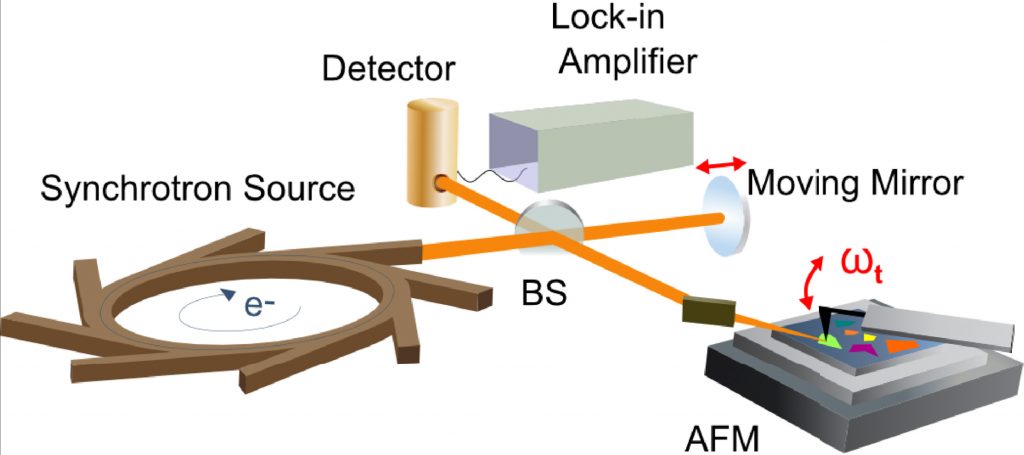Synchrotron infrared nano-spectroscopy and -imaging
| Reviews and Highlights | Quantum Science | Molecular and Soft-matter | Ultrafast Nano-optics and Nanophotonics | Mineralogy and Geochemistry |
|---|
Hans A. Bechtel, Samuel C. Johnson, Omar Khatib, Eric A. Muller, and Markus B. Raschke
Surface Science Reports 75, 100493 (2020).
DOI PDF

Infrared (IR) spectroscopy has evolved into a powerful analytical technique to probe molecular and lattice vibrations, low-energy electronic excitations and correlations, and related collective surface plasmon, phonon, or other polaritonic resonances. In combination with scanning probe microscopy, near-field infrared nano-spectroscopy and -imaging techniques have recently emerged as a frontier in imaging science, enabling the study of complex heterogeneous materials with simultaneous nanoscale spatial resolution and chemical and quantum state spectroscopic specificity. Here, we describe synchrotron infrared nano-spectroscopy (SINS), which takes advantage of the low-noise, broadband, high spectral irradiance, and coherence of synchrotron infrared radiation for near-field infrared measurements across the mid-to far-infrared with nanometer spatial resolution. This powerful combination provides a qualitatively new form of broadband spatio-spectral analysis of nanoscale, mesoscale, and surface phenomena that were previously difficult to study with IR techniques, or even any form of microspectroscopy in general. We review the development of SINS, describe its technical implementations, and highlight selected examples representative of the rapidly growing range of applications in physics, chemistry, biology, materials science, geology, and atmospheric and space sciences.
